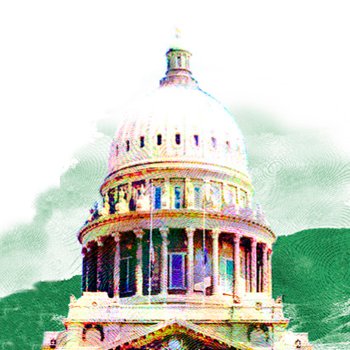Forest Service faces firefighter shortage in the West. How is Idaho impacted?
Published at | Updated at
BOISE (Idaho Statesman) — As peak fire season arrives, Idaho’s wildland firefighting crews are in decent shape, officials say — but shortstaffing in other states could have ripple effects.
Despite Idaho’s seemingly stable staffing, wildland firefighting crews are interconnected, traveling to provide assistance across the region and sometimes the country.
Last month, U.S. Forest Service chief Randy Moore told Congress his agency was facing a shortage of firefighters, about 10% nationwide but as much as half the staff in some parts of the West. In Idaho, Forest Service officials as well as the Bureau of Land Management and Idaho Department of Lands say crews are fully staffed despite difficulties recruiting applicants.
The staffing challenges come as President Joe Biden’s infrastructure bill promised pay boosts and a $15 minimum wage for wildland firefighters, benefits that firefighters say still haven’t materialized.
AGENCIES FACE CHALLENGES IN HIRING IDAHO FIREFIGHTERS
The Bureau of Land Management is responsible for nearly 12 million acres of land in Idaho — about 22% of the state’s total area — while Forest Service property covers roughly 40% of the state. Each agency has its own firefighting crews.
Dennis Strange, fire operations manager for BLM Idaho, told the Idaho Statesman his agency has seen a steady decline in the number of firefighting applicants over the last several years.
“This year is continuing to follow the trend we’ve been seeing,” Strange said. “There are a lot of jobs out there that folks have opportunities to go chase.”
Strange said the Bureau of Land Management is dealing with two challenges: attracting new applicants and retaining existing employees. According to Forest Service documents, wildland firefighters typically make between $26,150 and $49,765 annually.
Strange said Biden’s infrastructure plan and the minimum wage boost to $15 an hour could help, so long as federal agencies aren’t being outcompeted by other employers. According to a June 1 letter from the National Federation of Federal Employees, wildland firefighters have yet to see the $15 per hour minimum or other promised raises.
Still, Strange said his agency was able to fill the vacant positions it needed to in Idaho this year.
“The number of applicants were lower, but we’re not shortstaffed,” Strange said.
This year, Idaho BLM expects to hire roughly 350 firefighters, spokesperson Jennifer Jones told the Statesman. About 80 BLM smokejumpers — specially trained firefighters who parachute into remote fire locations — are also based at the National Interagency Fire Center in Boise, spokesperson Jessica Gardetto said.
Jones and Strange said Idaho is a pretty desirable location for firefighters, which has helped stymie staffing issues.
“Idaho has a lot to offer,” Strange said. “We have good places to live. Cost of living has affected the number of applicants that we’re receiving, but it’s still just a great place to live. That’s something that Idaho has been able to use to its advantage for a long time.”
Officials with the U.S. Forest Service did not respond to the Statesman by press time. But Moore, the agency’s chief, told lawmakers that staffing shortages were primarily in some of Idaho’s neighboring states: Oregon, Washington and California. The shortages are due in part to non-competitive wages, an overall labor shortage and widespread firefighter burnout and mental health issues, according to reports from Politico and Buzzfeed News.
Idaho’s other major wildland firefighting effort is run by the Idaho Department of Lands. Its crews primarily battle blazes on state-managed land. Department of Lands spokesperson Sharla Arledge told the Statesman in an email that the agency expected to “meet or nearly meet its seasonal firefighting hiring goals,” to the tune of roughly 250 firefighters.
Arledge said the Department of Lands has implemented its own pay bump, with wages up 25% over last year. Rookie firefighters can expect to make $15 an hour, while more experienced positions will garner higher pay.
“Given the scarcity of resources experienced by fire agencies nationally during the 2021 fire season, IDL anticipated facing challenges in recruiting enough qualified personnel to be prepared for 2022,” Arledge said. “Fortunately, the combination of increased starting wages, hazard pay and paid R&R have helped tremendously.”
By Tuesday, the Department of Lands still had job openings for experienced firefighters and engine bosses — firefighters who manage a crew and oversee incidents — listed on its website.
COULD SHORTSTAFFING ELSEWHERE AFFECT IDAHO?
So far this fire season, Idaho hasn’t seen significant burns. Many of this year’s blazes have been concentrated in the southwest U.S., where historic fires have hit New Mexico — including one that has been burning since January.
But as weather warms in Idaho and ongoing drought dries fuel sources across the state, fire danger will increase. And even with fully staffed fire crews, Idaho could feel the impacts of hiring shortages elsewhere.
Fire crews regularly travel to team up with other firefighters on large blazes. A megafire can amass thousands of fire personnel working together. In 2015, crews from as far away as Michigan traveled to work on the Soda Fire on the Idaho-Oregon border, which ultimately burned nearly 280,000 acres. Last year, crews from Massachusetts joined in on fires in North Idaho.
While Idaho hasn’t had many massive fires in the last several years, other states like California and Oregon have seen record-breaking fires year after year, and they are facing staffing shortages on the federal and state level. In the past, Idaho has sent firefighters to those states to work on their burns.
“All crews support a national system,” Strange told the Statesman. “We rely on our partners a lot to make that system work.”



